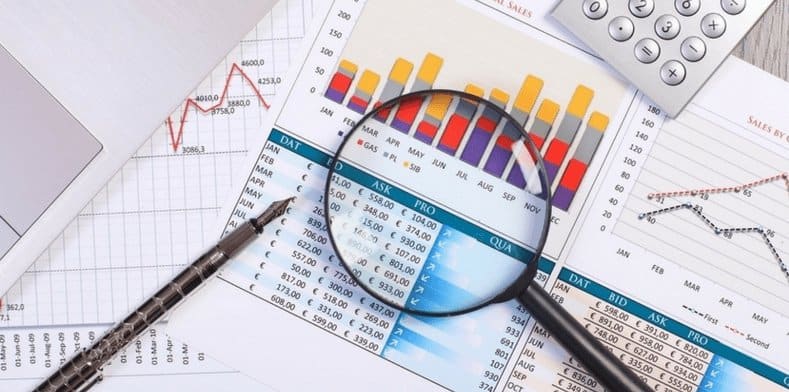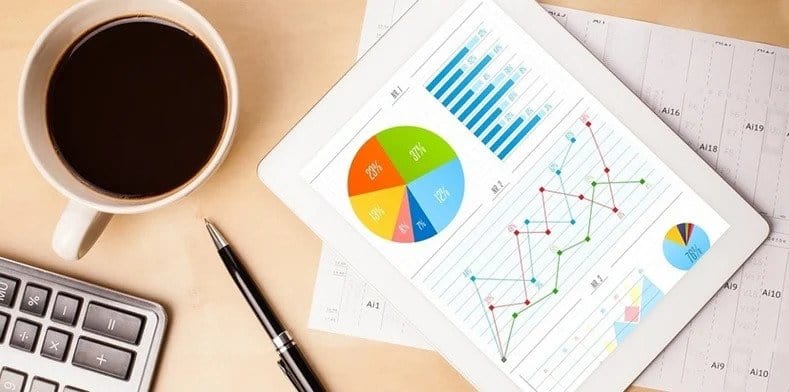This is a guest post written by our friends at Red Granite, an Orba Company and outsourced accounting firm.
Simply checking your income statement once a month is not enough to maintain the financial health of your retail business. To keep a finger on the pulse of your financials, you should frequently administer a mini financial health check. In addition to your balance sheet, there are a number of Key Performance Indicators (KPIs) for growth but it’s important to use industry-specific metrics. Whether you’re approaching year-end, or gearing up for a New Year’s sale to expunge your stale inventory, these are the 8 KPIs you can use to ensure your retail company is in good financial health going into January.
Liquidity
The first two KPIs fundamental to a financial health check are your liquidity ratios, and neither are found by looking at your income statement, which is why many retailers don’t pay close enough attention to them. These liquidity ratios indicate your short-term ability to cover your upcoming expenditures. These ratios are key for retailers during Q3 each year as you’re ramping up your inventory to cover the anticipated Q4 holiday season sales bump. While everyone knows cash is king and cash is the most liquid asset, liquidity also takes into account how easily you can convert other assets to cash. The more liquid your current assets, like accounts receivable and inventory, the better financial health your retail company holds.
You can determine your liquidity using the current and quick ratios. The difference between the two is that the quick ratio excludes your inventory, which may not be as readily converted to cash as your other assets.
- Current Ratio = Current Assets / Current Liabilities
- Quick Ratio = (Total Amount of Cash + Marketable Securities + Accounts Receivable) / Current Liabilities
Quick Tip #1 on Liquidity:
Focusing on the Quick Ratio is really your safest bet so you’re not assuming you can sell your inventory to cover your expenses. We tell our clients all the time that inventory is really a “liability” until you sell it and get cash! You could be sitting on a bunch of old inventory that you can only sell at fire sale prices, so assuming you can sell it quickly at full value may put you at risk of covering your expenses.
Quick Tip #2 on Liquidity:
Also, only include your most collectible accounts receivable in the Quick Ratio. Similar to old inventory, old accounts receivable may not actually be collectible and could cause you to overestimate your cash flow. Ideally, your Quick Ratio is greater than 1.5 after excluding your old accounts receivable.
Inventory Turnover
The next two KPIs are essential in a retailer’s financial health check in order to keep inventory levels at just the right amount, which ultimately improves your liquidity ratios we just discussed. The faster you cycle through your inventory, the less you’re sitting on inventory which improves your cash flow.
Calculate your inventory turnover using the formulas below. From your inventory turnover ratio, you can also determine your average days to sell, which is another way to look at how much inventory you have on hand.
- Inventory Turnover = Cost of Goods Sold (COGS) / Average Inventory
- Average Days to Sell = 365 Days / Inventory Turnover
Quick Tip #1 to Improve Inventory Turnover:
To eliminate excessive inventory, ensure you have adequate forecasting that is specific to each SKU you use. If you just forecast based on overall inventory balance, then you may not realize you have too much of one SKU and not enough of another SKU on-hand.
Quick Tip #2 to Improve Inventory Turnover:
Compare your Average Days to Sell ratio to how long it takes you to place an order for new products from your supplier. If you can get products from your supplier very quickly, then you can have a lower ratio and move closer to a just-in-time inventory model. This makes for awesome cash flow!
Gross Profit and Gross Margin
While the previous KPIs are focused on your cash flow based on where you stand today, the next two metrics let you know if you’ll be healthy and sustainable over the longer term. These two KPIs for a retailer’s financial health check go hand-in-hand: gross profit and gross margin, two accounting terms that are often confused.
Why bother monitoring both?
Gross profit is the first measure in profitability to determine how your sales price is performing compared to cost of goods sold (COGS). And your gross margin is an excellent snapshot KPI of your product mix. It serves to red-flag problem areas with pricing or unexpected costs over budget while providing valuable insight into your profitability.
Your gross profit is a dollar amount whereas your gross margin is a percentage found using your gross profit.
- Gross Profit = Net Sales – COGS
- Gross Margin % = Gross Profit / Sales Revenue
A Quick Tip to Improve Gross Profit:
Maximizing gross profit is the quickest way to cover your overhead expenses and ensure your business is profitable. You should analyze which customers and SKUs contribute the most to your gross profit. This will help you determine if your strategy should be to focus on lower volume sales channels that have higher gross margins, or to focus on higher volume sales channels with lower gross margins but that lead to lots of gross profit because of the volume.
Sales Channel Profitability
Finally, the ultimate test for your financial check-up is knowing your sales channel profitability, which is the focus on these final two KPIs. While your gross profit per sales channel is a good thing to know (per our last tip), your sales channel net profit is a more complete picture of that channel’s true profitability.
That’s because the net profit incorporates other direct expenses of that sales channel that the gross profit doesn’t include.
For example, if one of your major sales channels is Amazon.com, your sales channel net profit would also include the fees that Amazon charges you for late fees, fulfillment costs, Subscribe & Save discounts, and the myriad of other fees they charge you.
Your sales channel net profit is a dollar amount whereas your sales channel net margin is a percentage found using that channel’s net profit.
- Sales Channel Net Profit = Sales Channel Revenue – Direct COGS – Direct Expenses
- Sales Channel Net Profit Margin = Sales Channel Net Profit / Sales Channel Revenue
A Quick Tip to Improve Sales Channel Net Profit Margin:
If you sell via both wholesale and retail, then take a hard look at the sales discounts and early-pay discounts you offer to the retailers that you sell to. Each of them is a sales channel for you, and you need to balance the sales volume they offer you versus the discounts you offer them, which negatively impacts that sales channel’s net profit margin. Sometimes higher volume, with much lower margin, just isn’t worth it!
No matter which KPIs you employ to perform your mini financial health check, you will want to regularly revisit them along with your income statement each month to ensure your current strategy is on track.
And to find out more about Gross Profit Margin, download this free guide now!





